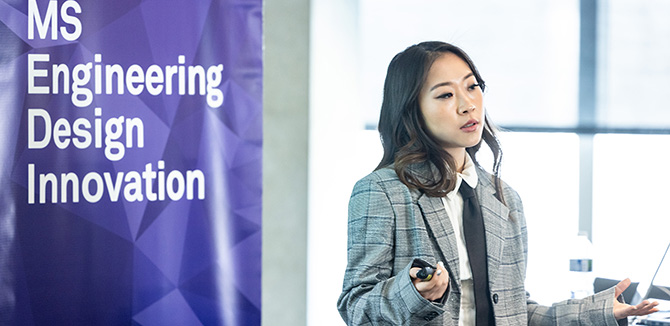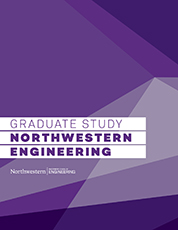The Bridge to Fashion’s Future
Karen Kodera’s (EDI '25) Thesis project built on her passion for fashion and became a platform to align consumer desires with sustainable production.

Karen Kodera (EDI ‘25) sees fashion as a form of self-expression.
She's always enjoyed shopping for a new outfit, but as a student with a limited budget, affordability is important. That's how Kodera, a student in Northwestern's Master of Science in Engineering Design Innovation (EDI) program, was introduced to fast fashion.
Fast fashion refers to trendy, affordable clothing that is mass-produced, often at the cost of quality and environmental sustainability.
For example:
- The fashion industry is responsible for 1.2 billion tons of greenhouse gases annually, a number expected to increase by 60 percent by 2030.
- Fast fashion produces 10 percent of global carbon emissions, more than international flights and maritime shipping combined.
- Fast fashion’s impact is felt particularly strongly in developing countries. Textile factories in Dhaka, Bangladesh, for example, release tons of toxic waste into rivers every year, leading to “forever chemical” levels up to 300 times the proposed EU limits.
"Fast fashion is tempting because it’s cheap and accessible, but I became increasingly aware of its environmental cost," Kodera said. "I started wondering if there was a way to enjoy fashion without contributing to waste."
That question led to Kodera’s EDI Thesis project – the creation of Bridg, a service that aims to transform the future of fashion production.
Bridg is a platform that harnesses the power of customer feedback to drive smarter production decisions in the fashion industry. Through interactive mini-games, Bridg helps brands produce only what consumers want, minimizing unsold inventory and keeping excess clothing out of landfills.
“Fast fashion thrives because it is affordable and trendy, but its low-quality items often can’t be resold or recycled, leading to massive overproduction and landfill waste,” Kodera said. “While consumers may feel guilty, that rarely leads to behavior change. The real impact lies in changing how brands produce.”
Initially, Kodera wanted her Thesis project to be entirely customer-focused, such as a tool to help shoppers make better choices. She realized that changing consumer behavior is particularly challenging, and she couldn’t rely on convincing people to stop buying.
That’s when her focus shifted to the brand side, thanks in part to a conversation with a design lead at Wilson Sporting Goods.
"I realized the responsibility falls to the brands to fix the problem of overproduction," Kodera said. "I saw an opportunity to make an impact through smarter production and collaboration."
Kodera's EDI experience proved invaluable in shaping Bridg. The program's emphasis on field research and user-centered design guided her approach.
“EDI emphasizes getting out into the field and connecting with real users,” she said. “I leaned heavily on user interviews, surveys, and testing to understand what people wanted. Those insights directly shaped the direction of Bridg.”
Bridg offers benefits for both brands and consumers. For brands, it reduces the risk of overproduction and unsold inventory. For customers, it provides a sense of connection with brands, early access to influenced products, and the satisfaction of participating in a more sustainable shopping experience.
As Kodera looked back on her Thesis experience, she recognized its transformative impact.
“Presenting the project gave me the chance to reflect on how much I had learned and grown,” she said. “It wasn’t just in my design skills. It was in my ability to speak confidently about a complex issue and propose a thoughtful solution.”
Kodera not only created a tool for change but also demonstrated the power of innovative thinking to address global challenges. As the fashion industry grapples with its environmental impact, solutions such as Bridg offer a glimpse into a more sustainable future.
Kodera said she was grateful to participate in the Thesis project and appreciated its value toward her own growth.
“Thesis is a rare chance to fully own a project from idea to execution,” Kodera said. “You get to pursue something you care about and shape it into something that reflects both your values and your design voice. It’s one of the few times where the project is truly yours.”

